Desert Hot Springs man comes forward as fifth person in remission of HIV
For the past two years, Paul Edmonds has been part of an extremely exclusive club with a membership that has reached five people.
After navigating HIV for more than 30 years, along with a leukemia diagnosis that came in 2018, a life-saving stem cell transplant became available thanks to a donor who had a rare genetic mutation that makes the body resistant to most strains of HIV. In 2021, Edmonds stopped taking his HIV medication, what he was dependent on for almost half his life. Today the 67-year-old who lives in Desert Hot Springs is the fifth person in the world in remission of HIV.
Edmonds joins four others who have received similar news, including the late Palm Springs resident Timothy Ray Brown (who was known as the "Berlin Patient"), the first person cured of the virus, who died from a reoccurrence of cancer in 2020. Others who are in remission of HIV are "London Patient" Adam Castillejo, "Düsseldorf Patient" Marc Franke and the "New York Patient," the first woman to be considered cured who has not come forth publicly. Edmonds is the eldest among the group and had HIV the longest.
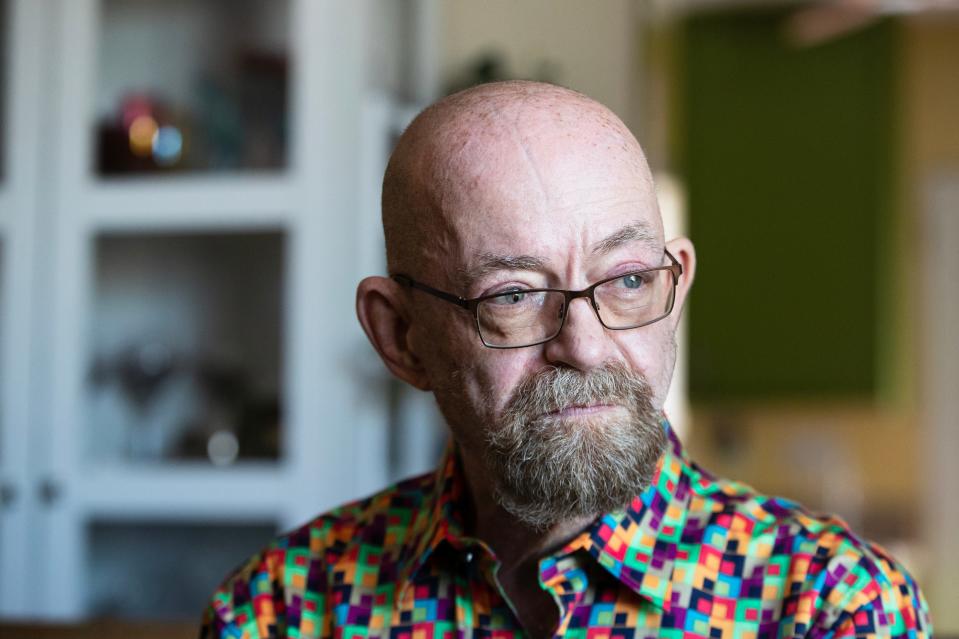
"I can remember the day and hearing about Timothy Ray Brown, that was huge," Edmonds told The Desert Sun in a recent interview. "That was the first time that I ever thought there could be a cure."
After two years of being anonymously known as the "City of Hope Patient," he decided to publicly come forward with his story. By sharing his journey, he wants to advocate for and offer hope to those living and aging with HIV that a cure could be possible one day.
Related: 'London Patient' Adam Castillejo, second person cured of HIV
'My heart sank'
Edmonds grew up in a small town in Georgia about 100 miles northeast of Atlanta. During his high school years, he struggled with his sexual identity and didn't have a support system because he kept it all to himself. His "lifesaver" at the time was his involvement in his school's band, which consisted of a close-knit group of people, some of whom he's still in contact with today.
By the end of his senior year, Edmonds felt he couldn't handle the pressure anymore. He decided to live with his cousins in Pensacola, Florida, where he would finish high school and begin college, until he moved back to Atlanta. He received therapy, found support and was able to "accept who I was and come out" as a gay man.
With a different outlook on life, Edmonds, 21 at the time, made the decision to move to San Francisco in 1976.
"Gay men were kind of flocking there from all over at that time," he said of the California city. "It was just an unbelievable experience. I'd never seen anything like it, and I no longer felt alone. It was just exciting and thrilling."
Everything was "just great" until the 1980s rolled around, and many of his peers started getting sick. "No one knew what was going on," Edmonds said about that time, although many would refer to it as a "gay cancer."
Human immunodeficiency virus, more commonly referred to as HIV, is a virus that attacks cells that help the body fight infections. If left untreated, it can lead to AIDS, or acquired immunodeficiency syndrome. On June 5, 1981, the Centers for Disease Control and Prevention reported on the first five cases of what would be known as AIDS.
Rare lung infections and an aggressive cancer called Kaposi’s sarcoma first began to show among men who have sex with men (MSM) in 1981, and by the end of the year, there were 270 reported cases of severe immune deficiency among MSM. The following year, more cases appeared among MSM in Southern California, which suggested the illness was sexual, leading to the name "gay-related immune deficiency." Cases also surfaced among those who inject drugs, hemophiliacs and Haitians.
Today, it is widely understood that the virus can be spread to all people, though some are still at higher risk of infection. Approximately 84.2 million people around the world have been infected by HIV since the start of the epidemic and 40.1 million people have died from AIDS-related illnesses.
Related: For decades, queer men have had trouble donating blood. Change could be on the horizon
Related: Reflections on 40 years of HIV/AIDS: Community members compare epidemic to COVID-19 pandemic
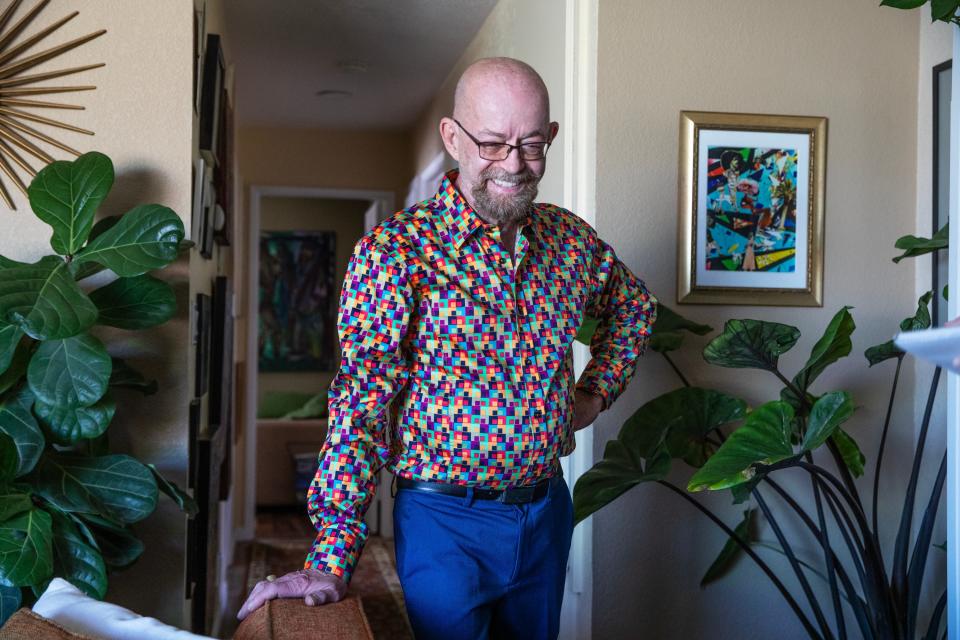
By the mid-1980s, the first HIV blood test was developed, but Edmonds was not ready to get results himself.
"Anyone who I knew who was testing positive was dead within two years," he said. "I just wasn't ready to go there."
He moved to Los Angeles for a few years to change his environment, but moved back to San Francisco in 1988. That same year, his father died, which served as the catalyst for Edmonds getting tested. The result came back positive, and because his helper T cell count was below 200 then, he was diagnosed with AIDS. He was 33.
"It just felt like my heart sank," Edmonds recalled, though he noted he did not feel sick. "The intern who was my doctor in this clinic, I can see her emotions. I think it was a hard thing for her to do."
He began using AZT, the first drug to gain approval from the U.S. Food and Drug Administration for treating AIDS. The drug helped decrease deaths and infections among those who were diagnosed with the virus, although it had serious side effects, such as intestinal problems, nausea, vomiting and headaches. Around the time Edmonds began taking the drug, doctors decided to cut the dosage in half, which lessened those effects. As new drugs became available, he would switch to them, and he "pretty much felt sick all the time."
"But I did what I had to do," he added. "I am not a person who just easily gives up. I don't look to the worst-case scenario, I don't allow myself to."
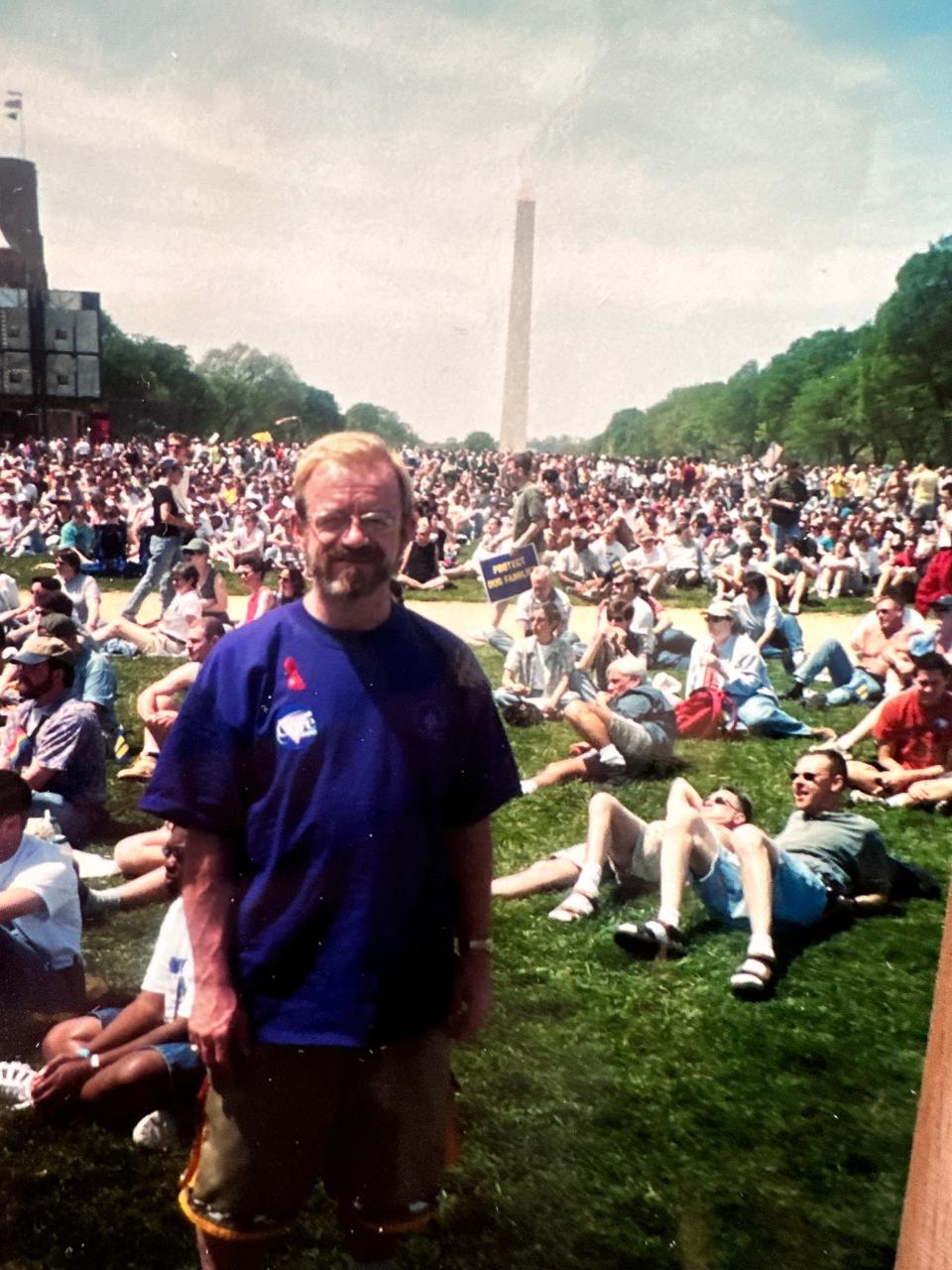
Though things looked dark in the HIV/AIDS fight back then, Edmonds focused on living in the moment and taking his diagnosis one step at a time. As medical advancement came, like protease inhibitors, medications that help slow the progression of HIV, he would allow himself to think about the future and felt hopeful that things would be brighter.
Sure enough, the birthdays kept coming. He always dreamed of having a big party for his 50th birthday, and he got to enjoy that moment surrounded by 100 guests in a lodge on the Russian River.
Edmonds also said he had an "incredible" support system in his life. The LGBTQ community "stepped forward" and helped when no one else would. Then in February 1992, during happy hour at the San Francisco bar Midnight Sun, he met Arnie House, who had served in the Air Force.
"It really was kind of like love at first sight. I don't know that we knew that right then, but that's what it was," Edmonds said of his husband. "Once we met, we've had very few days apart."
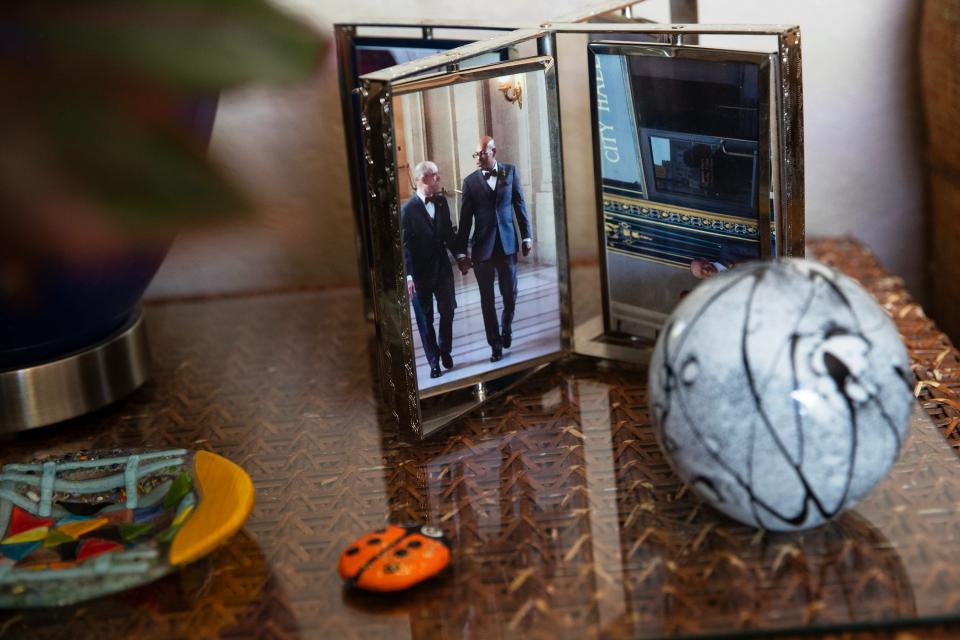
Edmonds encouraged House to get tested for HIV, who also received a positive diagnosis. But that didn't change anything between them, as they've "always been there for each other," Edmonds said.
Another lifechanging diagnosis
In August 2018, Edmonds was diagnosed with myelodysplastic syndrome, which eventually developed into acute myeloid leukemia, a cancer that starts in the bone marrow but often moves into the blood. Those living and aging with HIV are at higher risk of developing leukemia and other blood cancers due to suppressed immune systems.
It was recommended that Edmonds start chemotherapy as soon as possible, and later undergo a stem cell transplant. At the same time, Edmonds and House were planning on moving to the Palm Springs area, and he was referred to seek treatment at City of Hope in Duarte, one of the highest-volume transplant centers in the nation.
Not only would doctors look for a donor to address his leukemia, but also one who carried a rare mutation, homozygous CCR5 delta 32 mutation, which makes people resistant to most strains of HIV infection. Only roughly 1% of people carry this mutation. The four other people who have been declared in remission of HIV have received transplants that have targeted their HIV and a type of cancer.
It took almost a month before a donor was found via the Be The Match donor registry. Before he could undergo the transplant, his acute myeloid leukemia had to go into remission. He went through three rounds of chemotherapy, and he developed a fungal infection in his lungs during one. He also had to change the antiretroviral drugs he was taking in order to minimize drug interactions with the chemotherapy.
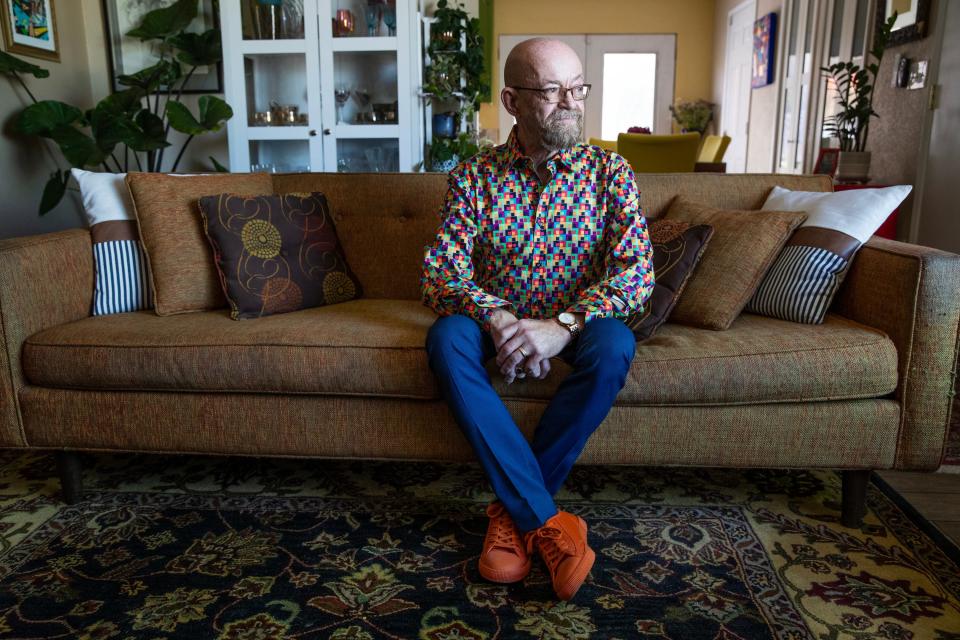
Finally in mid-January 2019, his leukemia went into full remission thanks to a reduced intensity chemotherapy that was developed for older patients. Afterward, he received a week of chemotherapy to wipe out his immune system and prepare his body to receive his donor's healthy stem cells, which he said was the "hardest of all of them."
But despite all the pain and side effects, "I didn't have to think at all whether I wanted to move forward to get a bone marrow transplant," Edmonds said. "I didn't even see it as an option ... it was that or death."
On Feb. 6, 2019, the transplant lasted about 30 to 40 minutes via an IV transfusion. Edmonds said he didn't have any side effects and almost immediately "felt great." Nurses even gave him a medal and started singing "Happy Birthday" to celebrate the moment.
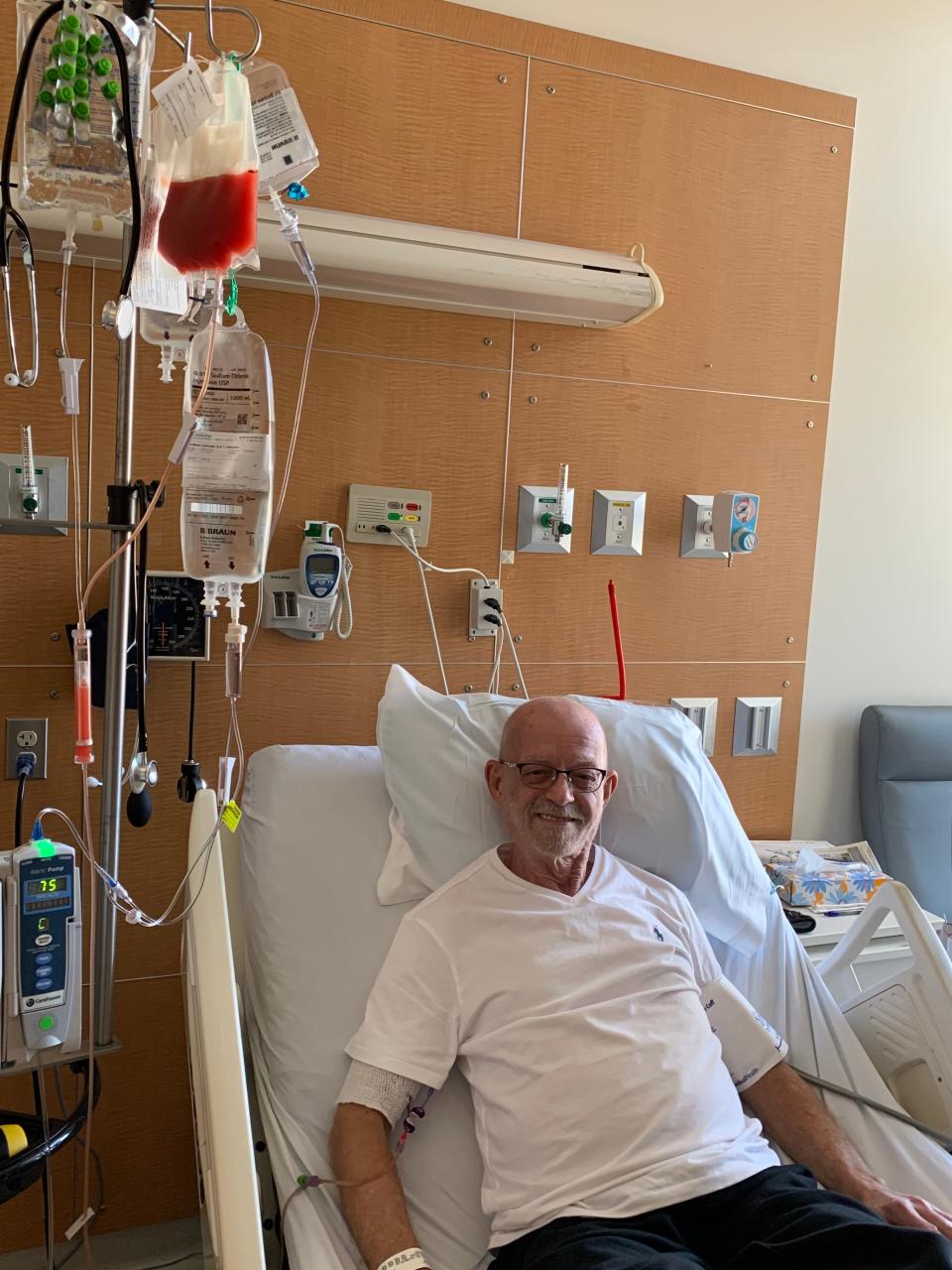
"New life came into me," he said, noting that his blood type changed to his donor's, which is common in transplants. Some recipients might also notice other changes regarding allergies or their hair texture. "I was kind of hoping I would start getting some new hair, but that didn't happen. That's OK," he joked. Among lingering side effects that Edmonds deals with are dry eyes and mouth sores.
Edmonds had to stay close to the hospital after his treatment, and many friends from across the country stayed with him and made sure he was never alone. "I just had the best time," he recalled of all the trips they took, like playing tourist in his once-home of Los Angeles.
'A miraculous story'
Doctors carefully monitored Edmonds following his transplant for both his cancer and HIV status.
Dr. Jana Dickter, associate clinical professor with City of Hope’s Division of Infectious Diseases, did a number of tests to see if there was any evidence of HIV found in his body. When she and her colleagues could not find any, she opened up a "second trial" and asked Edmonds to stop taking his HIV medications.
"I monitored him for any occurrence of HIV virus and this entailed getting blood tests on him every week initially and then converted to every two weeks just because we wanted to catch if there was any recurrence in the system and start him back on his medications," Dickter said. "The longer the time went, there was no evidence of circulating HIV."
Additional testing was done in labs, such as challenging his cells with HIV, but they could not be infected with the virus, and there was no evidence of an HIV reservoir found in his body.
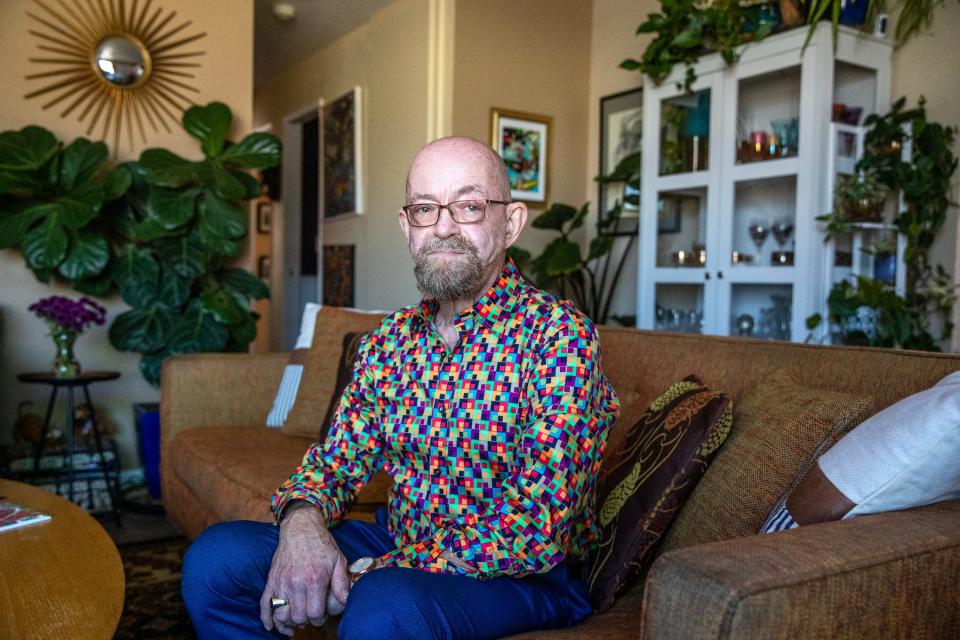
Edmonds officially stopped taking his HIV medication in March 2021.
"I still have to remind myself that it's real," he said of his in-remission HIV status. "But I'm feeling it."
There's still a little bit of worry in the back of his mind about whether his cancer or HIV will return, but he said he's gotten to the point where "it's OK for me to let myself believe it, and I absolutely believe it." He also said the people he's told locally have been "just thrilled for me and very, very supportive."
For Dickter, witnessing the journey firsthand has been "incredibly exciting." When she entered medical school in the 1990s, she got to see the excitement when antiretroviral therapy became available and it provided patients who were so close to death with a "second life." Fast forward to today, she was one of those in the room to tell a patient they were in remission of HIV.
"I've always wanted to be able to tell a patient that there was no evidence of remaining virus in their system, and at City of Hope we were able to do just this," Dickter said. "The experiences that he encountered, especially early on and the stigma and the fear, he's a true survivor of the epidemic, and it's so wonderful to see this happy ending for him and his family."
The success of Edmonds' treatment and his unique circumstances also give Dickter hope that it could be reciprocated in others. He was unique in the sense that, compared to the four other people who underwent transplants, he was the oldest patient, had been living with HIV the longest and had received reduced intensity chemotherapy. "This case gives me hope that there might be other opportunities in the future for older people who have HIV and blood cancers that we may be able to put them in remission for both," she said.
There's also plenty of research taking place at City of Hope in hopes of potentially finding a cure for HIV. Not only are there discussions about providing transplants for other patients with HIV and blood malignancies, but Dickter said there's an upcoming clinical trial that will look at chimeric antigen receptor T cells to treat HIV. She explained there has been preclinical research that has shown these "T cells can target and kill HIV-infected cells and potentially control HIV, and this has the potential to provide HIV patients with lifelong viral suppression without antiretroviral therapy."
Edmonds also hopes to be an advocate for HIV cure research and provide support wherever he can. He currently sits on the Community Advisory Board for RID-HIV (Reversing Immune Dysfunction for HIV-1 Eradication) Collaboratory, one of 10 Martin Delaney Collaboratories for HIV Cure Research funded by the National Institutes of Health, which he is "very honored" to be a part of. He is also in contact with his peers Castillejo, who has spoken at a number of conferences, and Franke, just beginning his public journey, and hopes to do work with them.
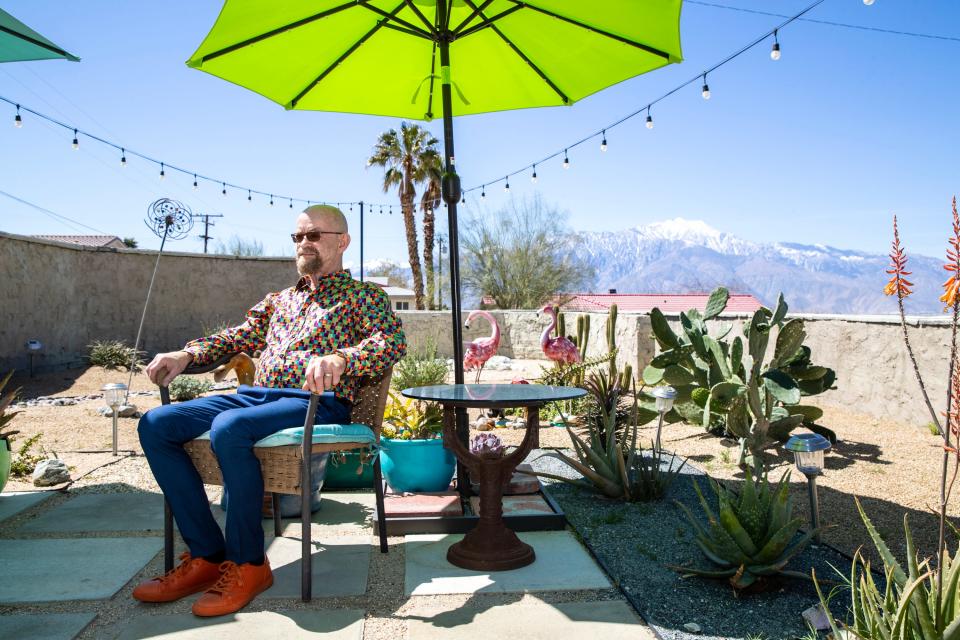
For now, Edmonds gets to live his life on his own terms, although he still visits City of Hope for routine care and tests. He and House are avid painters and have their art showcased throughout their home − Edmonds paints more abstract pieces while House does more figurative work. Edmonds wants to create collages that tell his story in some way, but they also have a bit of work to do around their Desert Hot Springs home, where they've lived for almost two years. As they emerge out of mostly sheltering-in-place during the height of the COVID-19 pandemic, there are also plans to visit San Francisco this summer.
Aside from encouraging the HIV-positive community, there's also a part of Edmonds that hopes the intern who informed him of his AIDS diagnosis in 1988 stumbles upon his story and sees where life has taken him. Where he stands today is a moment so many have hoped for, and one that seemed unthinkable decades ago.
"It truly is a miraculous story," he said with a smile.
Ema Sasic covers entertainment and health in the Coachella Valley. Reach her at ema.sasic@desertsun.com or on Twitter @ema_sasic.
This article originally appeared on Palm Springs Desert Sun: Desert Hot Springs Paul Edmonds 5th person in remission of HIV

